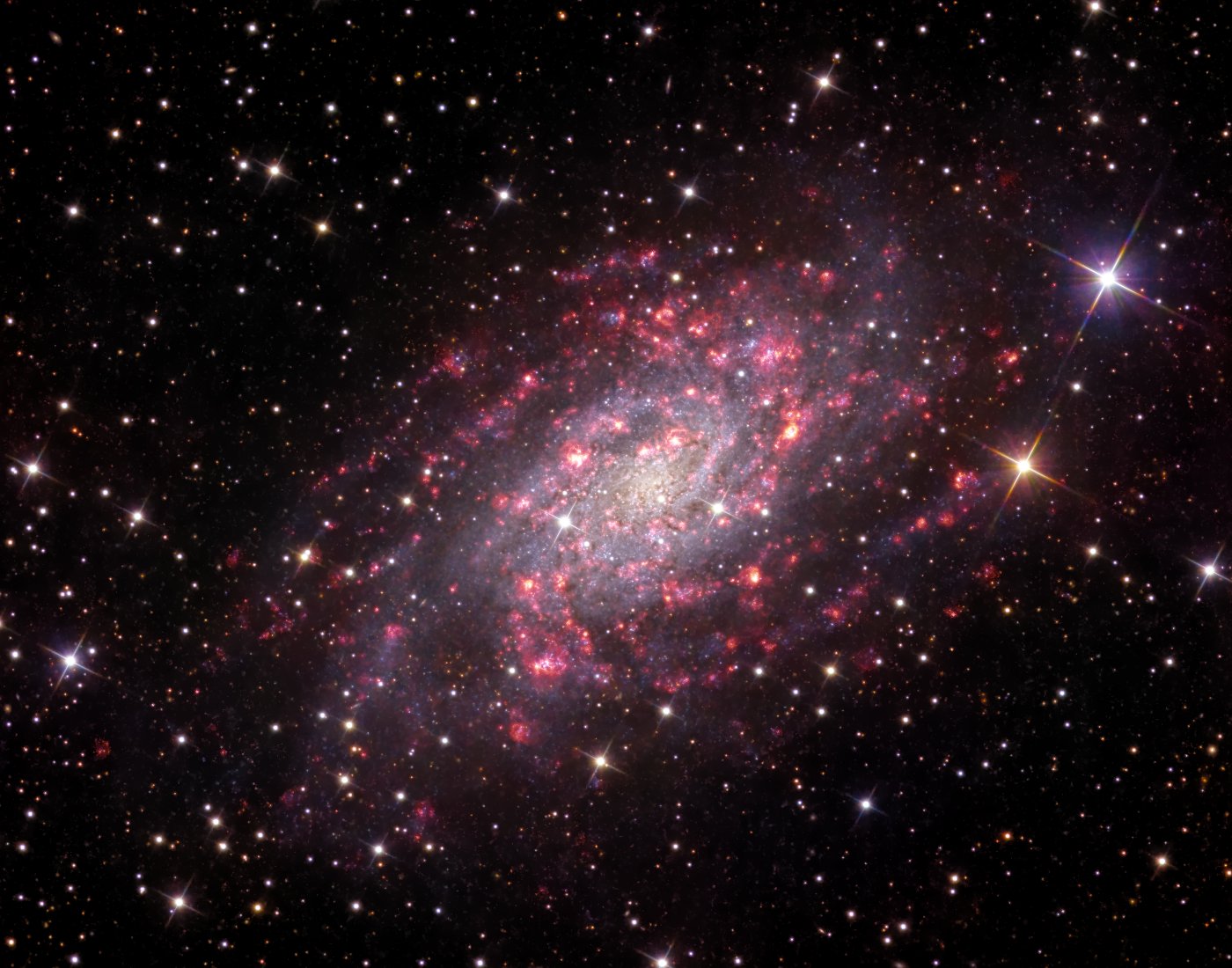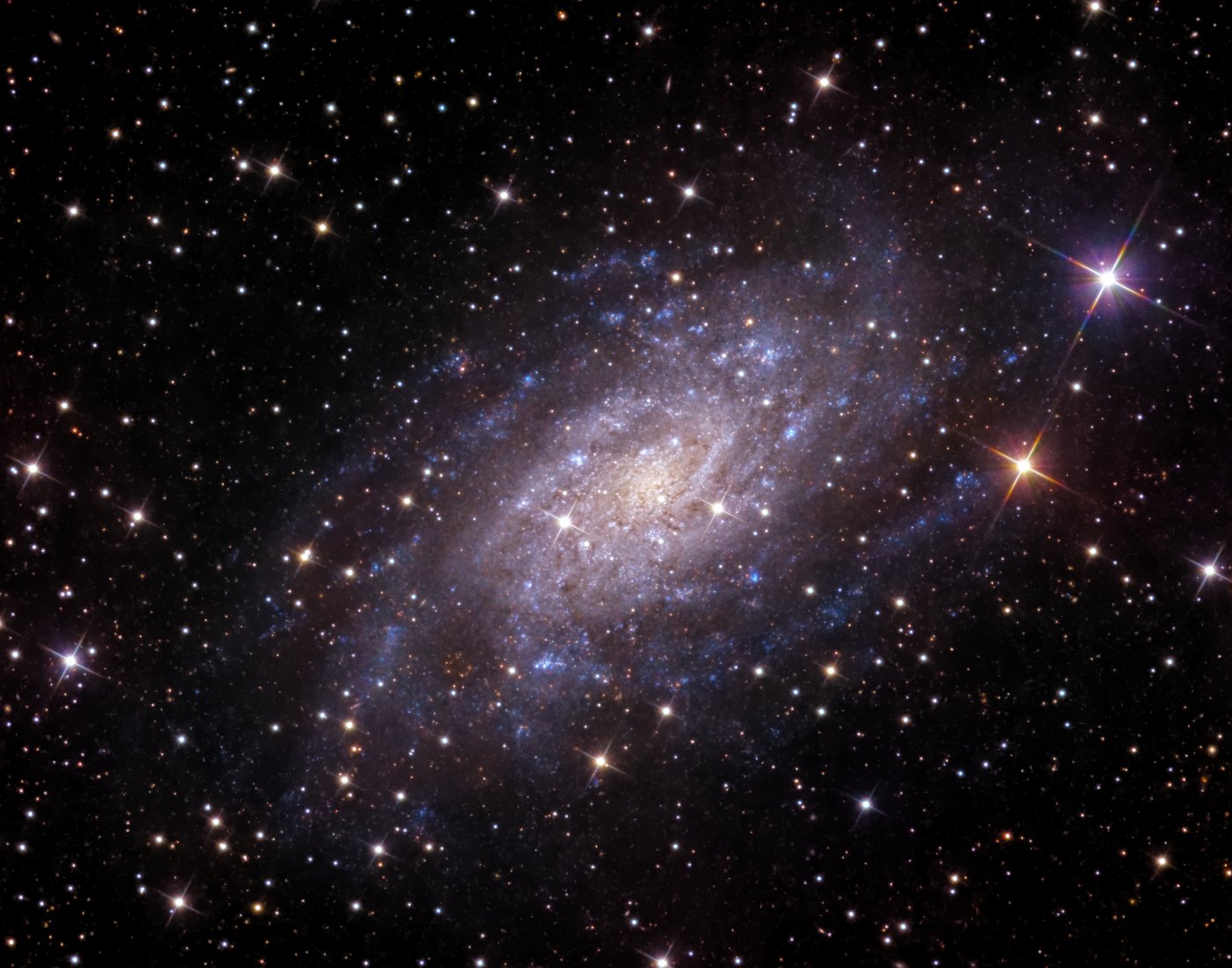NGC 2403 and NGC 2404 in H-alpha and continuum light
NGC 2403 (also known as Caldwell 7) is a spiral galaxy in constellation Camelopardalis with many star-forming HII regions. One of these regions has its own NGC number: NGC 2404. The Galaxy lies at a distance of 9.7 million light years and is a member of the M81 group, one of the nearest groups to the local group.
Click on the image to load a full resolution version using a JavaScript viewer.
By toggling between the images (click on the button) it can be seen that the HII regions (reddish) correlate with bluish regions. That's because the HII gas clouds typically contain many young (blue) stars which are also responsible for the ionization. Furthermore the HII regions also emit [OIII] and H-beta light
which is collected by the blue filter.
NGC 2404 is the large HII region left to the galaxy center and north of (above) a bright star. Outlines of this HII region can be plotted in the Javascript viewer by pressing the key '3' or via menu.
Image data
| FOV: | 0.62° × 0.44° (full view) | ||||||||
|---|---|---|---|---|---|---|---|---|---|
| Date: | 2019-2022 | ||||||||
| Location: | Pulsnitz, Germany | ||||||||
| Instrument: | 400mm Newton at f=1520mm | ||||||||
| Camera Sensor: | Panasonic MN34230 | ||||||||
| Orientation: | North is up (approximately) | ||||||||
| Scale: | 0.8 arcsec/pixel | ||||||||
| Total exposure times: |
|
Image processing
All image processing steps are deterministic, i.e. there was no manual retouching or any other kind of non-reproducible adjustment. The software which was used can be downloaded here.Image processing steps where:
- Bias correction, dark current subtraction, flatfield correction
- Alignment and brightness calibration using stars from reference image
- Stacking with masking unlikely values and background correction
- Denoising and deconvolution
- Color composition
- Dynamic range compression using non-linear high-pass filter
- Tonal curve correction

